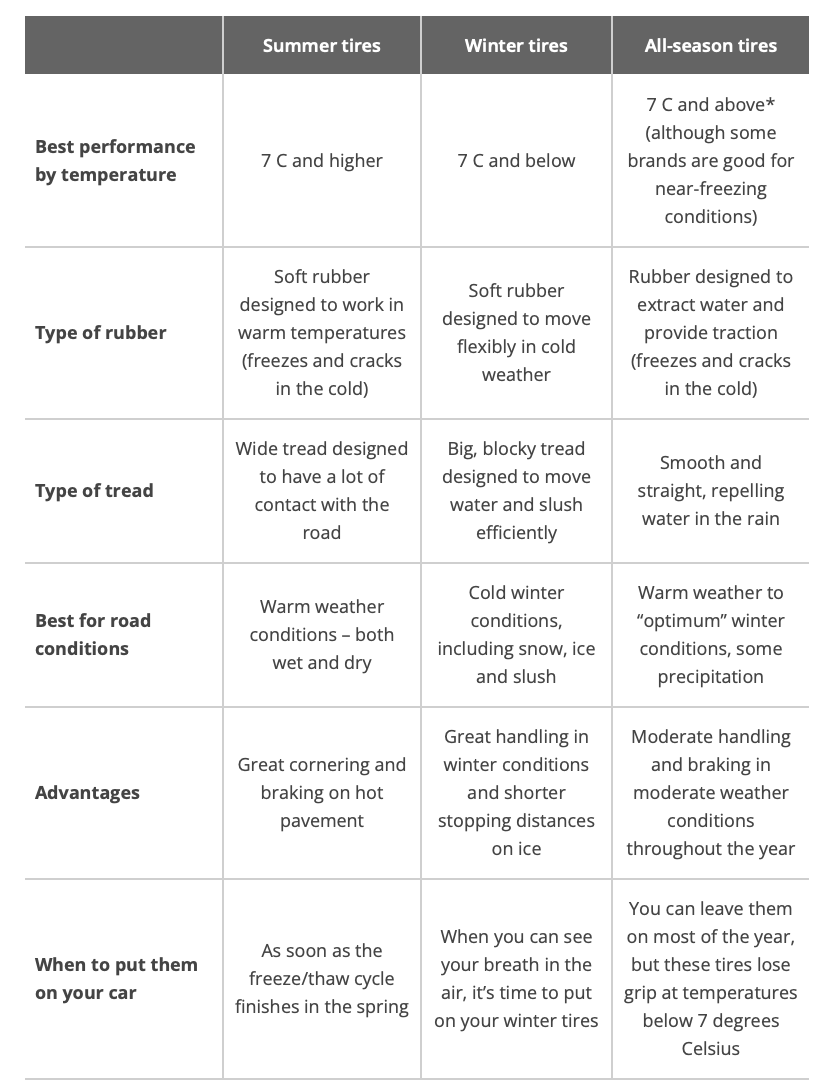Bergens Auto Body is a family-owned SGI Elite auto body shop and a Trusted Regina collision repair expert. From the moment you walk in the door, you will be treated like family! We are proud to have over 80 Years of Auto Body Experience, and have been serving Regina Autobody needs for over 30 Years.
In our latest Bergens auto collision avoidance tip, we share our recommendation on why you should invest in winter tires.
Winter is here again. And with it, ice, wind, snow and slush – all the conditions that make driving in Saskatchewan challenging.
Now’s the time to get your vehicle ready for the harsh conditions and that includes picking out the right tires.
A tire for all seasons
Different tires are designed for different seasons and when you have the right tire for the right season you get better results.
Here’s what you need to know:

Summer tires
Summer tires, also known as performance tires, are designed to work best in warm weather conditions. These types of tires have soft rubber and usually have tread that is designed to have a lot of contact with the road. Summer tires work best in warm conditions – both wet and dry – and offer great braking and cornering.
However, that soft rubber hardens up when the weather gets cooler, causing it to lose contact with the road. Summer tires aren’t designed for winter conditions and increase your stopping distance. The rubber is also prone to cracking, which can cause more problems.
The verdict: Great in warm weather but perform poorly when the temperature starts to dip.
All-season tires
All-season tires are designed to perform moderately well in all seasons of the year. They don’t have the same strong handling and grip of summer tires, and only perform moderately well in the winter.
The verdict: Works moderately well in all climates, but both summer and winter tires are better options for their respective seasons.
Winter tires
Winter in Saskatchewan comes with extreme weather. Winter tires – usually marked with a mountain or a snowflake symbol on the sidewall – are your safest option for winter driving.
Designed for harsh winter conditions, they have big blocky treads, which move water and slush more efficiently, and softer rubber that maintains its flexibility in cold temperatures. Some winter tires are also “studded” with claw studs that penetrate the ice and improve the tire’s grip. These features work together to help you grip the road on ice, snow, and slush. Even at low speeds, there’s a big difference in stopping distance. And that distance can be very important if you need to stop quickly for any reason, like a pedestrian crossing the road.
Remember, it’s not a good idea to keep your winter tires on your car after the snow melts. The soft rubber can become an issue in the heat, so you should swap them for summer or all-season tires as soon as the temperature starts to rise. They also wear out faster because they work hard to grip the road – they may need to be replaced after three or four seasons.
The verdict: Winter tires are worth the investment to keep you safe on the road.
